Estimated reading time: 9 minutes
The best egg-laying chicken breeds will earn their keep in their first year. When you keep hens just for the eggs they produce and not for the meat, both the quantity and quality of eggs are critically important. And the fact is, some breeds are just better layers than others.
All quality egg-laying breeds produce at least 225 eggs per year. Now that might sound like a lot of eggs, but if you spend a few moments tallying up how many eggs your family consumes at breakfast and in cooking recipes annually, it might not seem like such a large number.
Even the best chicken egg-laying breeds slow down or cease production entirely during the winter months. Keeping consummate egg-laying chicken breeds allows you to stockpile eggs to preserve when they hit their peak laying months so that you can still bake and cook using naturally raised farm-fresh eggs year-round.
Want to save this post for later? Click Here to Pin It On Pinterest!
8 Best Egg Laying Chicken Breeds
1. White Leghorns
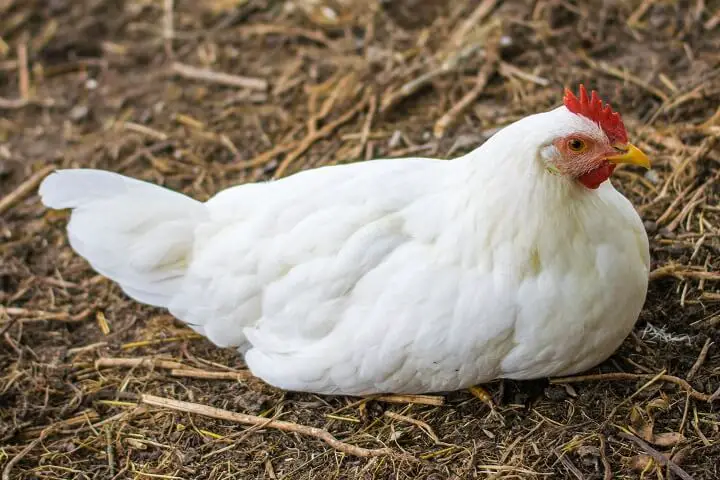
White Leghorn hens are not only capable of laying more than 280 eggs per year, but they are also a very hardy bird. In my personal experience, white leghorn hens are less likely to succumb to illness than at least five other breeds I have also routinely kept.
In addition to their robust health, white leghorn hens also seem to be more resistant to the cold and struggle far less with frostbite during the winter months than multiple other breeds.
White Leghorn chickens are officially known as being better coop-kept poultry birds than free-rangers, but I have always free-ranged my flocks and have found the reverse to be true. They are a truly adaptable bird that can spend the bulk of their time in a fairly small coop, or they can easily be trained to free-range and forage on their own.
There are only two downsides to keeping white leghorn chickens and they both are related to the breeding process. The hens are great layers, but not good sitters. I recommend investing in an incubator or some bantam hens to incubate any eggs laid to keep flock numbers up.
White Leghorn roosters are notoriously rowdy and can be highly temperamental. One of my white leghorn roosters, A.K.A. Flock Leader, hated everyone but me, although he would tolerate small children and not flog them until they bled like he did for sport with everyone else over four feet tall.
White Leghorn hens typically weigh about five pounds and start laying their first eggs when they are roughly 17 weeks old. They lay large white eggs.
2. Ameraucanas
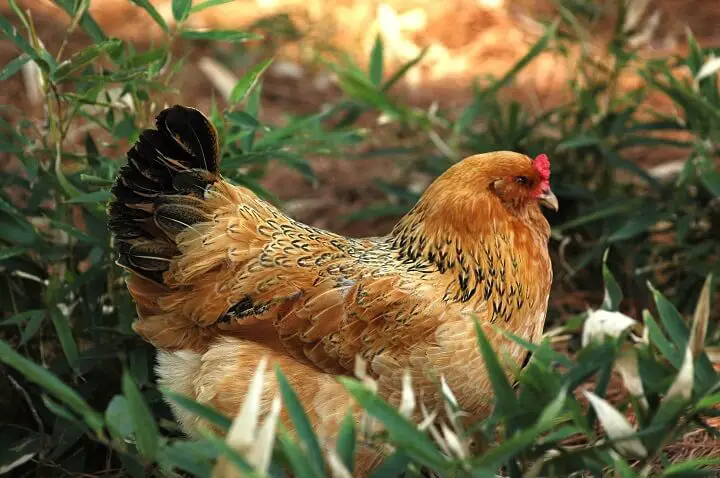
Hens from this chicken breed commonly lay more than 250 eggs on an annual basis. Ameraucana hens are generally docile, except when they are sitting eggs, and then they can go extremely broody. You may need to wear thick gloves when wrestling eggs away from your otherwise docile hen.
Chickens of this breed are well suited for coop living but will tolerate free-ranging. They can struggle a slight bit when the thermometer drops or raises significantly, but are typically regarded as a fairly hardy and healthy chicken breed.
Ameraucana hens start laying later than white leghorn hens. Typically hens of this breed do not begin laying until they are about 25 weeks old. Mature hens weigh between four and a half to five pounds, on average.
These birds are also known as “Easter Eggers” because the large eggs they lay are neither white nor brown but come in a vast array of beautiful muted shades of blues, greens, and pinks.
3. Golden Comet
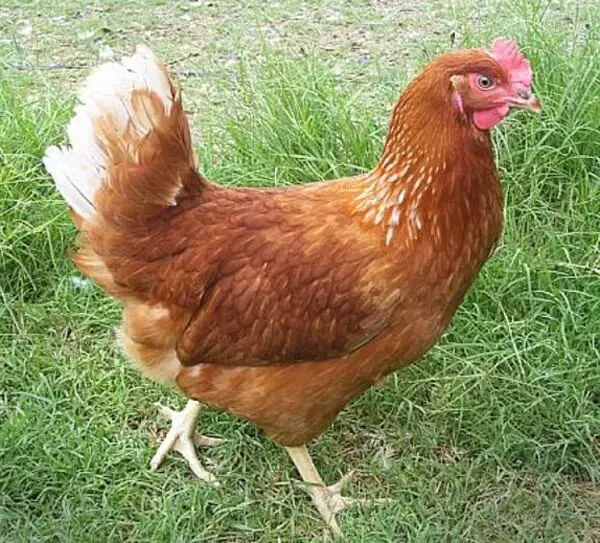
Hens of this chicken breed commonly lay between 250 to 300 eggs each year once they reach maturity. Golden comet chickens are great free-rangers and perhaps one of the most cold-weather hardy breeds you can raise.
Golden comet hens are very large and typically weigh between five and a half to seven pounds. The hens from this breed do not generally go broody and are usually docile and quiet in nature. They cohabitate well with other chicken breeds, ducks, and guineas.
These hens begin laying medium to large brown eggs once they are roughly 15 weeks old.
4. Speckled Sussex
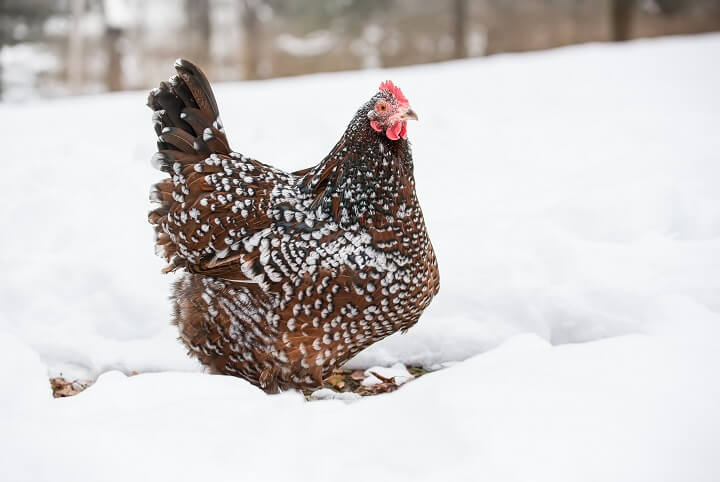
These demure beauties are capable of laying between 200 to 300 large brown eggs each year. Speckled Sussex hens weigh between seven to eight pounds on average. Although they are incredibly large hens, their docile personalities often make them targets of more aggressive breeds in the flock.
I would highly recommend against keeping speckled Sussex hens with white leghorns – especially if you are also keeping a rooster of the same breed.
Hens from this chicken breed begin laying when they are approximately 16 weeks old. They are a curious bird and take well to free-ranging, but are generally content inside a nice safe coop.
5. Barred Plymouth Rock
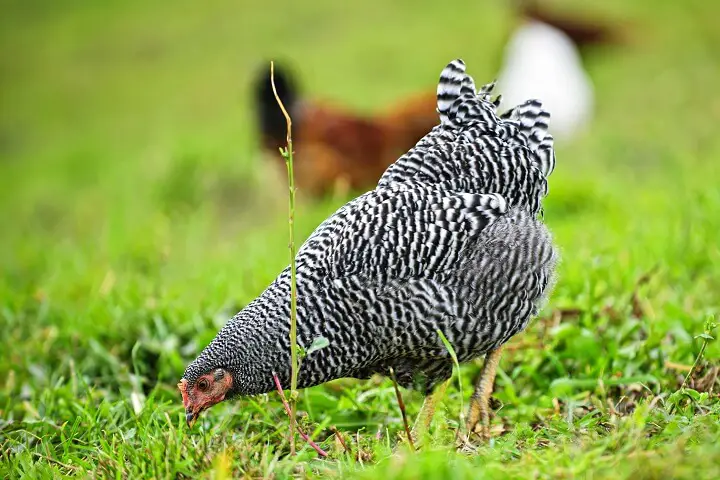
Hens of this breed are often thought of more as farm pets than livestock. They are incredibly gentle and attention-seeking – a favorite among farm kids all across the country. Barred Plymouth Rock hens lay between 250 to 280 light brown medium to sometimes large eggs. Some keepers experience more peach-colored eggs than brown when raising these birds.
This laid back chicken breed is hardy, quiet, and free-ranges with great ease. These birds also adapt well to coop life and do not tend to get broody.
A hen from this chicken breed weighs in at roughly six and a half pounds. Barred Plymouth Rock hens typically begin laying eggs when they are 18 to 20 weeks old.
The only drawback with this breed of hen is that their high production rates tend to fall once they reach the age of two. All chickens reduce laying with age, but it seems to hit the Barred Plymouth Rock breed earlier and harder.
6. Rhode Island Reds

These friendly and calm hens lay roughly 250 delicious large brown eggs annually. Rhode island red hens typically weigh around six and a half pounds. They are a large and hardy hen that was once part of the breeding mixture for the vulnerable heritage breed of Buckeye chickens.
Conventional chicken keeping wisdom maintains that Rhode Island reds are excellent free-rangers that can become “bossy” or aggressive with smaller hens in the same coup. In my personal experience, I have found hens of this breed to prefer the safety of a spacious coop, perish more easily than any other breed that I free-range, and are demure to the point of frustration inside the coop.
I have kept Rhode island reds multiple times simply because I love their large brown eggs. They are probably one of my biggest disappointments from a breed perspective because they tend to have the greatest difficulty learning the free-range and dusk put-up routine and do not seem naturally inclined to grasp boundaries and dangers when outside of the coop.
Their egg production is excellent and even though they are lousy sitters, a banty hen or two is always willing to step up and shoulder that burden. I do not want to discourage anyone from getting Rhode island reds—they are nice birds—I just personally do not count them among my favorites due to the shy nature of all those that I have kept and their lack of ability to develop “farm smarts” when free-ranging.
7. Golden Laced Wyandottes
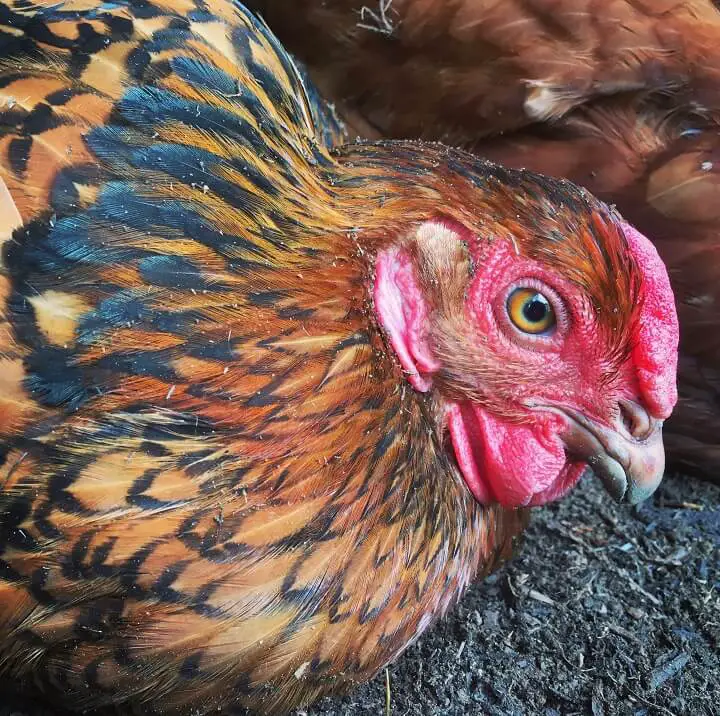
These attractive hens lay approximately 260 medium to large brown eggs annually. Golden laced wyandotte chickens are a heritage breed and multipurpose bird, meaning they are equally sought after by keepers for both eggs and meat.
These hens typically weigh six pounds once they reach maturity. Golden laced wyandottes usually being laying once they hit about 19 weeks of age. These hens do have a tendency to go broody and might lash out when you reach in to snag some eggs.
Golden laced wyandottes are adequate free rangers and also become quickly accustomed to coop life. They are a hardy bird that withstands temperature fluctuations well.
8. Australorps
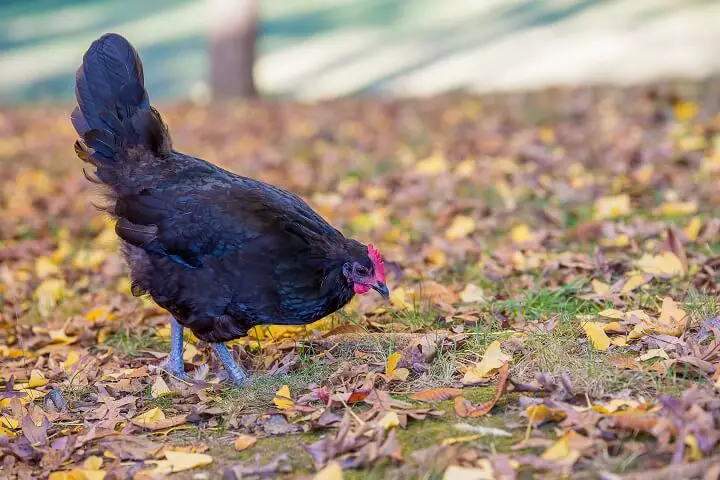
These hens are perfect for newbie chicken keepers. They are exceptionally smart and easy keepers. Australorps usually lay between 250 to 300 large light brown eggs each year.
Hens of this breed are not only excellent egg layers, they make great meat birds too. Australorps weigh about five to seven pounds. They begin laying when they are approximately 22 to 24 weeks old, a start that is a lot later than most top egg-producing chicken breeds.
The only drawback to keeping Australorp hens is their tendency to seek out weaker and more docile members of the flock and attack them on a whim, sometimes eating the eggs laid by other hens.
Final Thoughts
There are pros and cons to every type of chicken breed, but the ones on this top egg-laying list are the cream of the crop when it comes to the consistent production of quality eggs.
Whether you're new to chicken keeping or seeking to increase the eggs produced on your homestead, try sticking to just one breed at a time to learn their quirks, strengths, and weaknesses to avoid becoming overwhelmed by dealing with lots of different feathered personalities all at once.
Like this post? Don't Forget to Pin It On Pinterest!

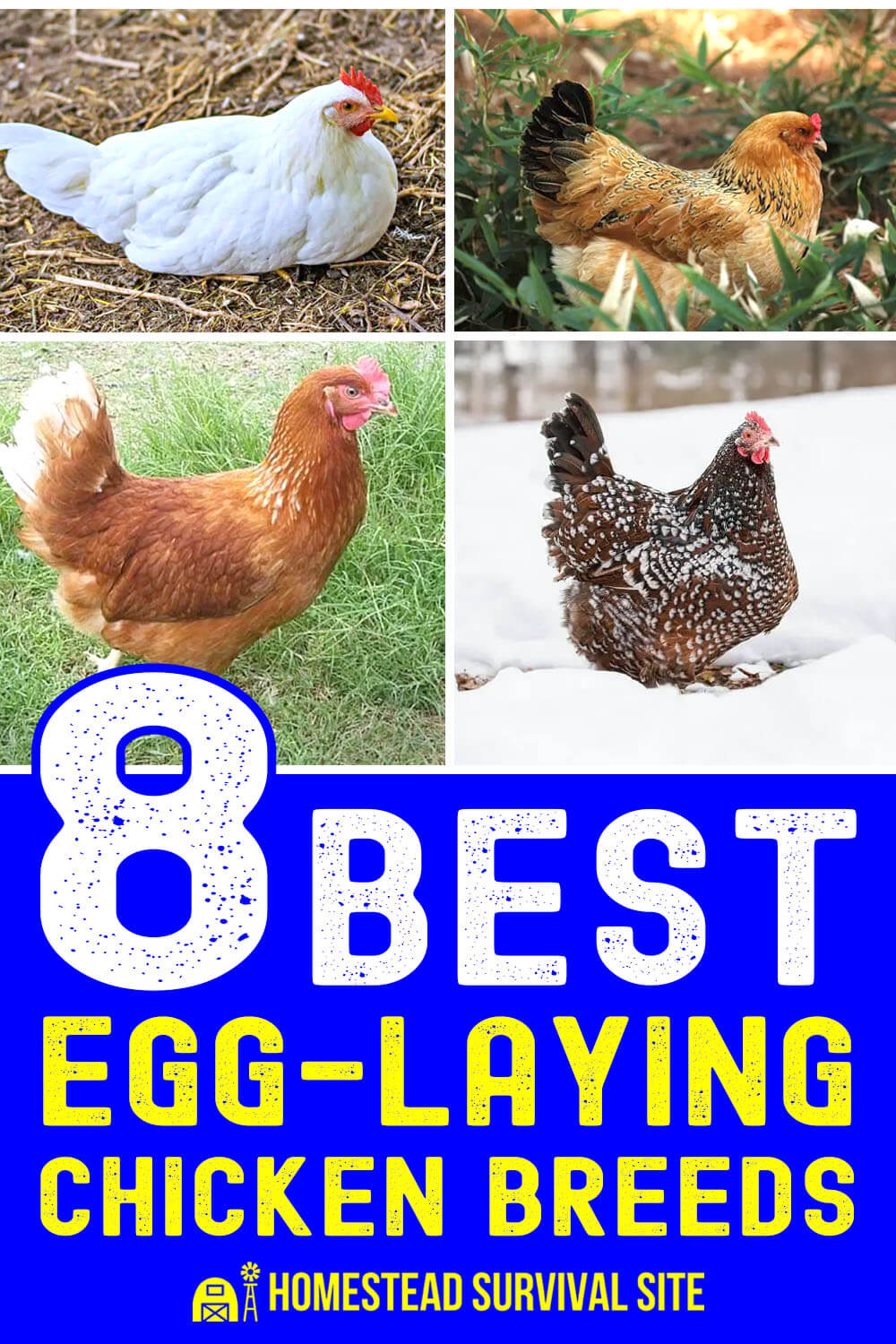




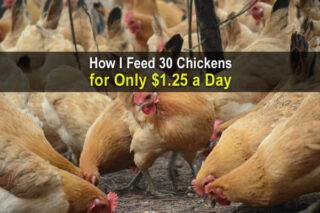



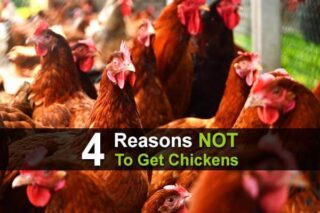

We have Barred Rocks and Australorps. Besides being good egg layers, the Barred Rocks are also great comedy. They’re the most curious and smartest chickens which leads them into getting in trouble. My Australorps are the leaders and one in particular is the Queen (Leader Lady). Very bossy, muscles in when anyone fines a bug goldmine. Another acts as security and stands at the highest place in the yard.
Do you have a prejudice against white eggs? Just curious. All those brown eggs.